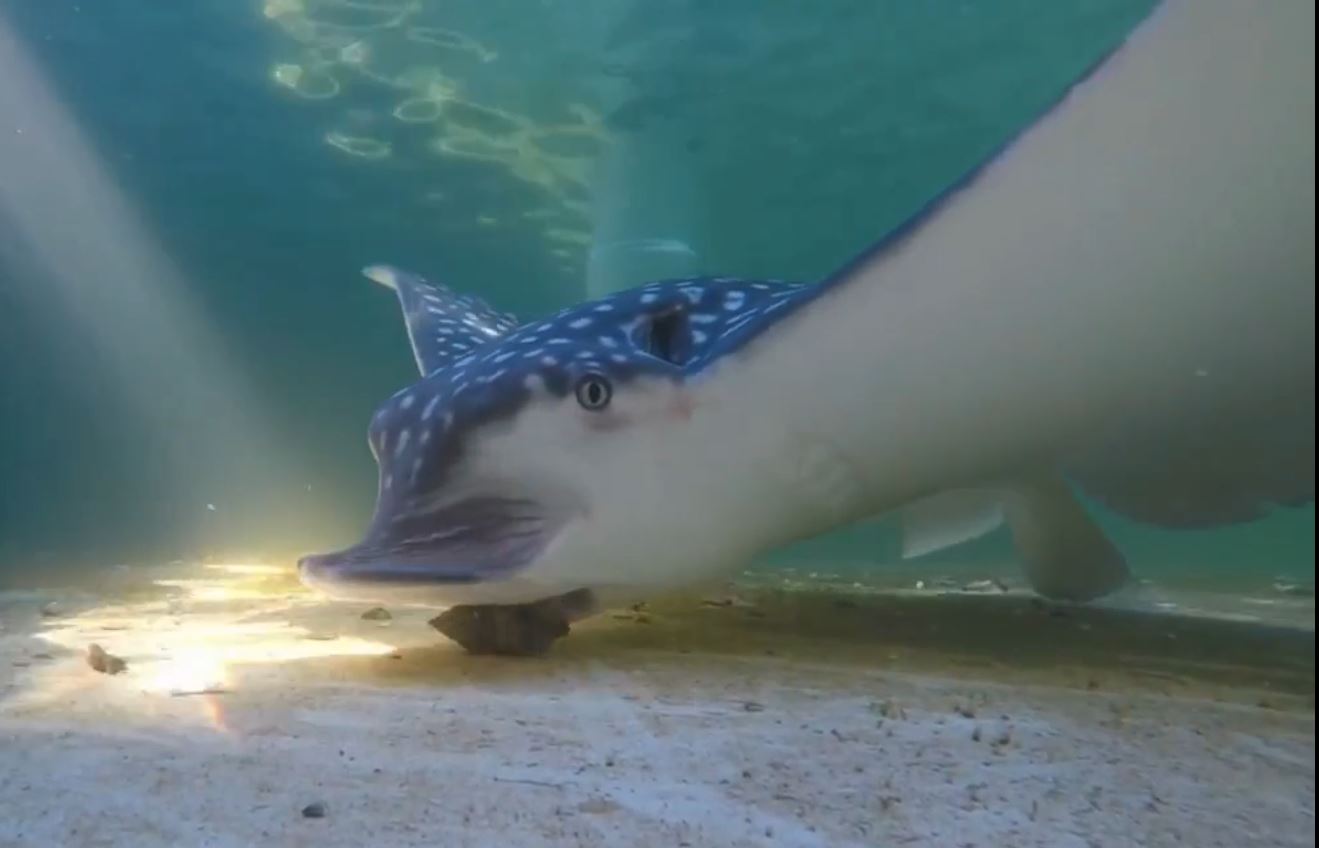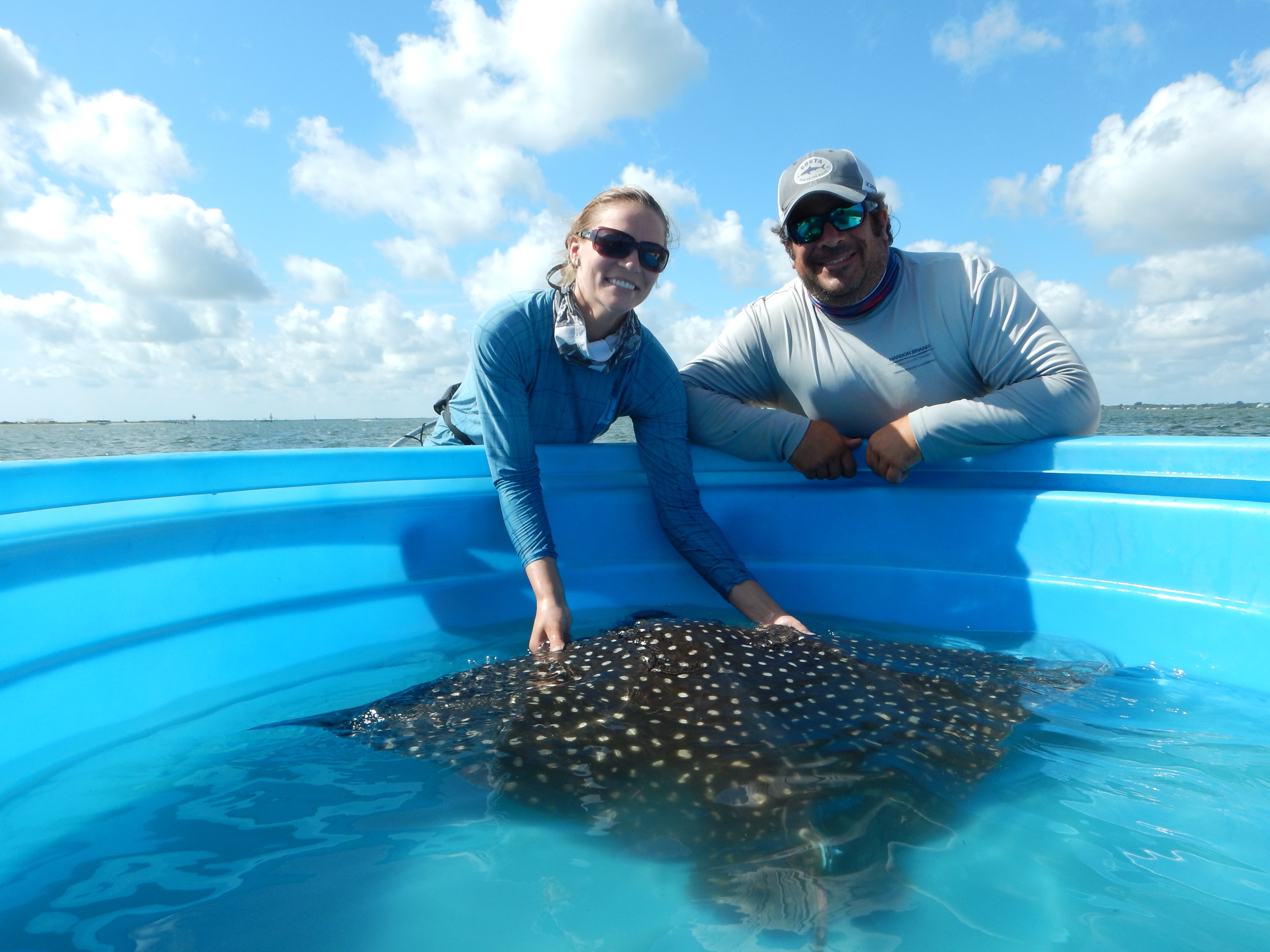A unique long-term study quantified the abundance of whitespotted eagle and giant manta rays in Southeast Florida. Researchers conducted 120 survey flights between 2014 and 2021 from Miami north to the Jupiter Inlet. One or both species were seen on nearly every flight and both populations appear to be stable in the region. The giant manta rays were more abundant in the south and the whitespotted eagle rays were found all along the coast. Neither species seems to be deterred by the greater human population density in Fort Lauderdale/ Miami.
Tag: Whitespotted Eagle Rays

DNA Decodes the Dining Preferences of the Shell-Shucking Whitespotted Eagle Ray
With mighty jaws and plate-like teeth, the globally endangered whitespotted eagle ray can pretty much crunch on anything. Yet, little information is available on critical components of their life history in the U.S., such as their diet.
Crushed Clams, Roaming Rays: Acoustic Tags Reveal Predator Interactions
Inspired by clam fishermen reports, researchers used passive acoustic telemetry to gauge the interactions between two highly mobile rays. They monitored the tagged rays in the wild over two years to see how often and when they visited clam leases. Results provide both good news and bad news for clammers. Rays spent even more time in these clam lease sites than clammers reported or suspected, but it’s not necessarily where they prefer hanging out.

Drifter or Homebody? Study First to Show Where Whitespotted Eagle Rays Roam
It’s made for long-distance travel, yet movement patterns of the whitespotted eagle ray remain a mystery. Between 2016 and 2018, scientists fitted 54 rays with acoustic transmitters and tracked them along both the Gulf of Mexico and Atlantic coasts of Florida, which differ in environmental characteristics. Results of the study reveal striking differences in travel patterns on the Atlantic coast compared to the Gulf coast. Findings have significant conservation and adaptive management implications for this protected species.